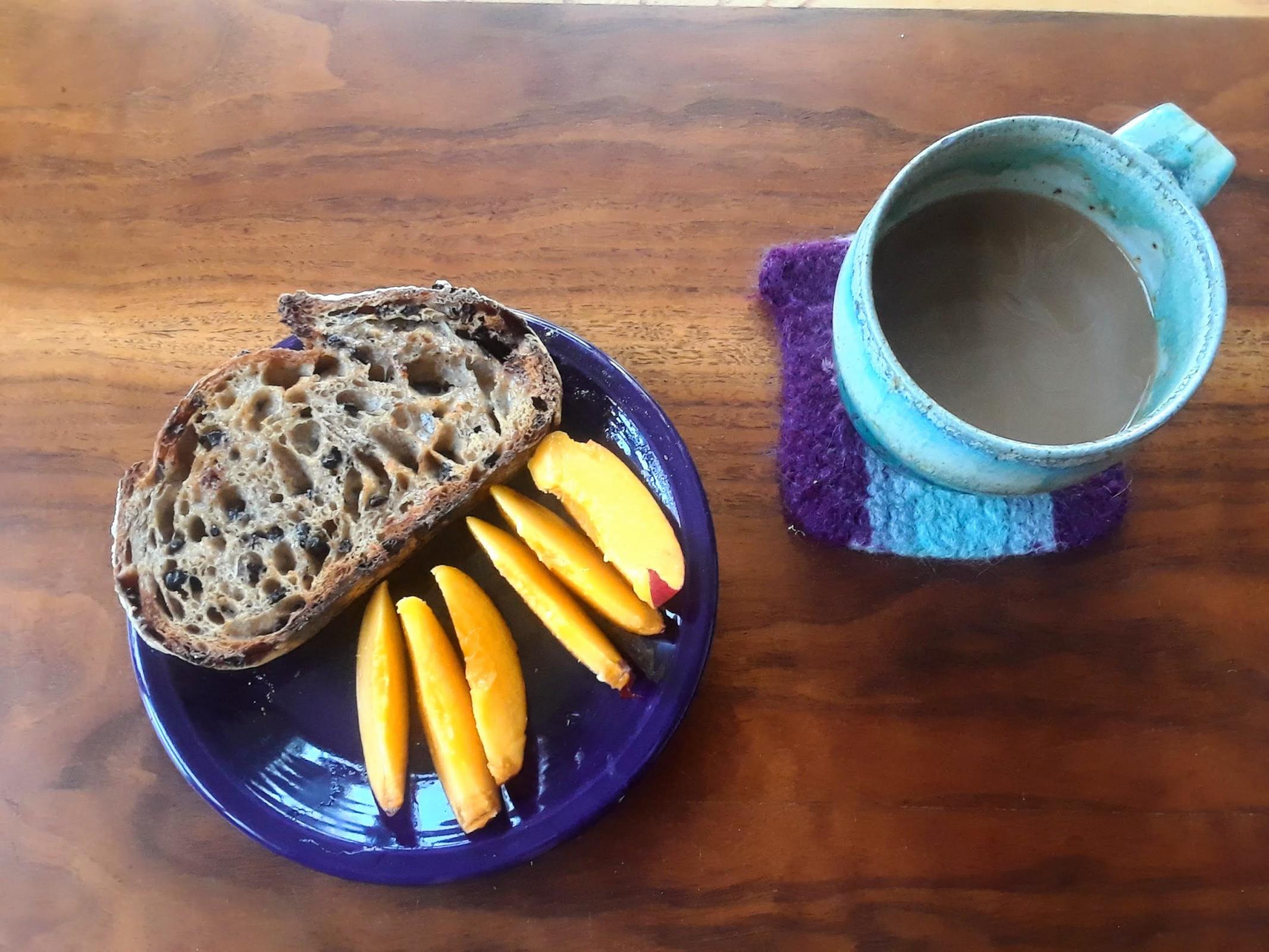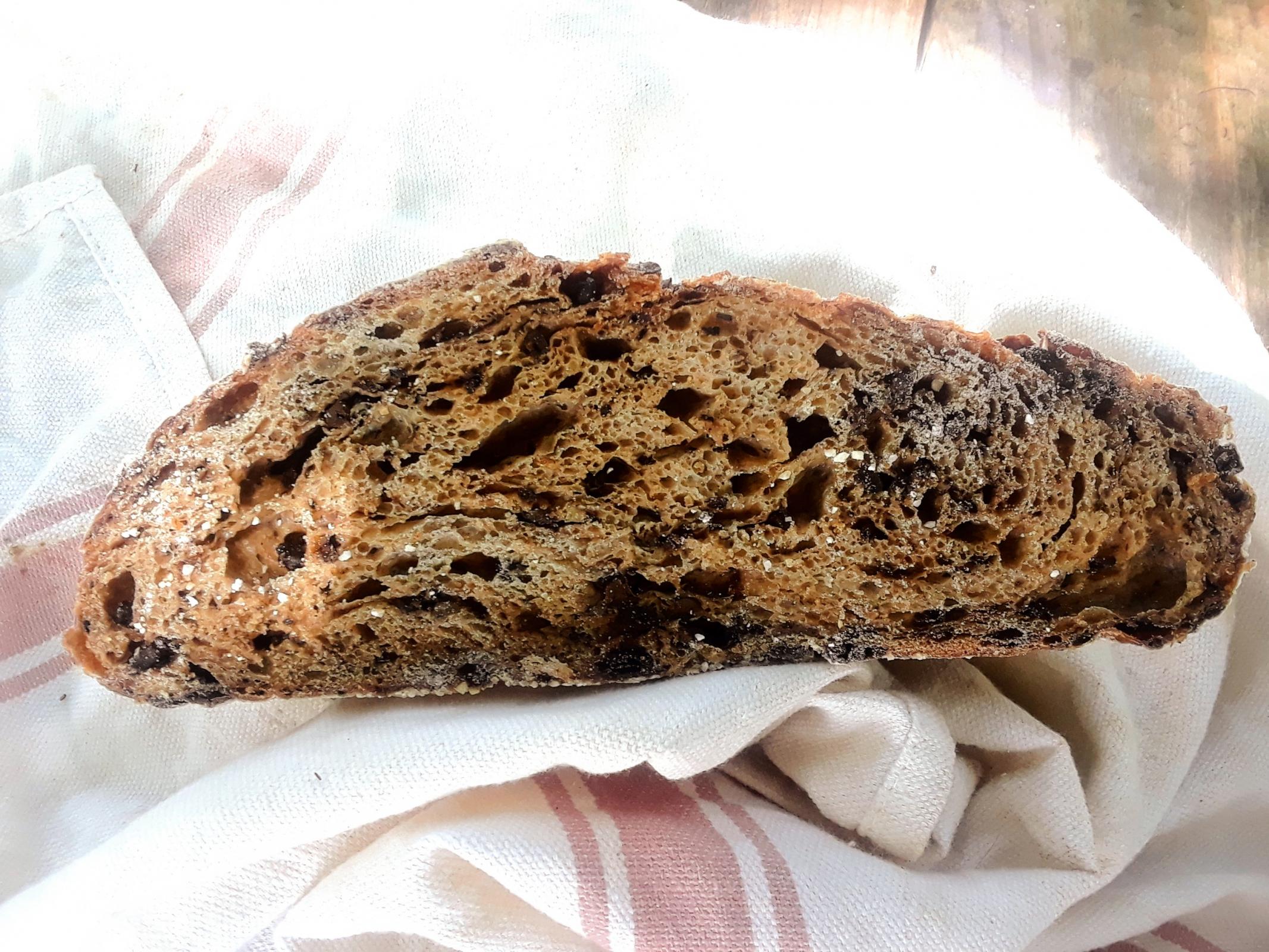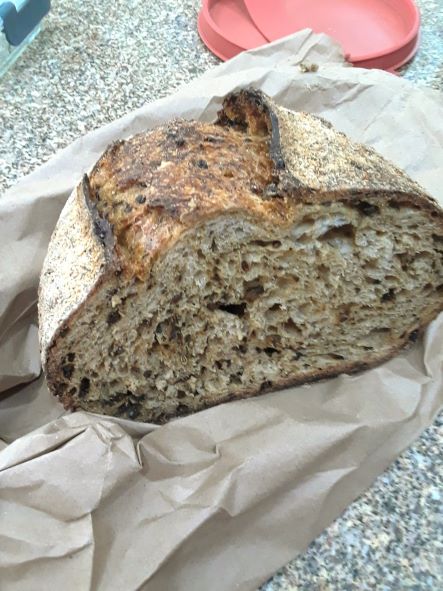Maybe one (well two) of my best loaves ever, I think. I was really happy with these, especially because I made them for a family gathering, and I'm always afraid of making loaves to share that don't end up turning out to be up to my personal standards.
While searching for injera bread last week, I happened upon some roasted barley at an Ethiopian grocery and bought it thinking it might make a richer variation on my experimentation with barley porridge loaves.
Roasted barley- 250g
water (with a little yogurt mixed in)- 500g + extra
soaked for 3 days
---------------------
Bread Flour- 700g (70%)
Red Fife Whole Wheat (home milled by friend)- 150g (15%)
Dark Rye Flour- 100g (10%)
White Spelt Flour- 50g (5%)
Leaven- 100g (10%)
Water- 750g (75%) *plus water contributed by prooidge addition
Salt- ~6 tsps
------------------------
Process:
-Mix leaven and water, add flours, mix until incorporated, autolyse for ~1 hr (room temp. ~mid 80s probably)
-After atolyse, add salt, pinch in
-stretch and folds every 30ish min for 3hrs. Incorporated soaked barley after 2nd set of folds (stretched out dough, spread barley across surface, fold, repeat)
-move dough to refrigerator for about 1 hr cool down dough and slow fermentation
-move dough to "root storage" walk-in (~60 degrees) to continue bulk fermentation overnight (~6.5 more hrs)
-divide dough, pre-shape, wait 15min or so, shape, wait, 10 min or so, stitch up, let sit at room temp (~mid70s) for another 30 min
-move to refrigerator for cold proof (~8 hrs)
-Bake: 500 covered, for 20 min, 500 uncovered, 10min, 450 uncovered for 20 min. Take out batard, continue to bake miche further ~20 min (I might have further lowered temp. t0 425 or 400 for this part)
------------------------

I think reducing the Tartine formula from 50% porridge to 25% porridge made for loaves that were much easier to shape and get an airy crumb. (And 25% still feel like a lot of add-ins). The roasted barley smelled nice and added a rich flavor, but it was a bit acrid. I think cooking it would have been a better approach flavor-wise, but I don't know if the crumb would have been as airy.
It had a nice crunchy, crusty outside and a good soft, airy inside- pretty close to ideal, especially working with the barley add-ins. Still, the mythical flavor of my first barley porridge loaf eludes me, but this was closer and structurally much better.
---------------------------
Sitting, watching the sun rise over the marsh, fresh bread, peaches, and hot coffee- that's damn near heaven.

Round 2: Cooked Porridge
I wanted to try the above idea again but cook the barley instead of soaking/fermenting. The cooked porridge looked fairly similar to the soaked grain, but the resulting loaf had a much creamier crumb.
Pretty much same approach, temperatures, and timing.
Dough make-up: 10% white spelt, 30% red fife ww, 60% bread flour. Also 5% wheat germ. Otherwise same as above.
Structure was a bit saggier than first loaf, probably due to cooked porridge contributing more water, though the non-white bread flour percentage was also slightly higher. This loaf isn't quite as exciting, but the creamy porrige-y crumb is very enjoyable.

3rd Iteration
The goal with this one was to take a 100% bread flour dough and add the porridge to that to see if the greater dough strength would take the porridge and still yield a nicely structured loaf. Answer: yes, but I don't think the flavor or texture was as good, though it did look quite nice.
spec.'s:
450g bread flour
20g wheat germ
333g water (~75% hydration)
3 tsp salt
-----------
~280g roasted barley porridge with ~tbsp each of fennel and flax seed (I'm not 100% sure on this weight- I started around 60g or dry barley I believe, and then I cooked it into a porridge adding water as needed and seeds in the process, and then I arrived at the final weight by weighing it in the pot and then subtracting the weight at the pot, which should work but 280g was a bit higher than I expected).
pretty standard routine as detailed above.
result: very nice structure, elegant ear. The flavor was nice, but not as rich as I expected with all the strong flavors of the porridge. Also, I think the roasted barley is just too bitter tasting; regular barley is a much better choice
